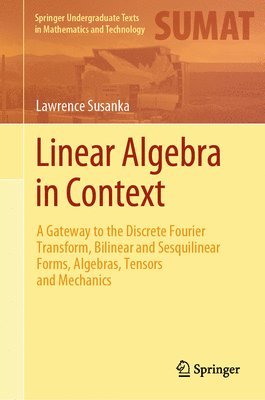Kommande

1729:-
This text combines a compact linear algebra course with a serious dip into various physical applications. It may be used as a primary text for a course in linear algebra or as a supplementary text for courses in applied math, scientific computation, mathematical physics, or engineering. The text is divided into two parts. Part 1 comprises a fairly standard presentation of linear algebra. Chapters 1-3 contain the core mathematical concepts typical for an introductory course while Chapter 4 contains numerous "short" applications. Chapter 5 is a repository of standard facts about matrix factorization and quadratic forms together with the "connective tissue" of topics needed for a coherent discussion, including the singular value decomposition, the Jordan normal form, Sylvester's law of inertia and the Witt theorems. Part I contains around 300 exercises, found throughout the text, and are an integral part of the presentation. Part 2 features deeper applications. Each of these "large" applications require no more than linear algebra to discuss, though the style and arrangement of results would be challenging to a beginning student and more appropriate for a second or later course. Chapter 6 provides an introduction to the discrete Fourier transform, including the fast Fourier algorithm. Chapter 7 is a thorough introduction to isometries and some of the classical groups, and how these groups have come to be important in physics. Chapter 8 is a fairly detailed look at real algebras and completes a presentation of the classical Lie groups and algebras. Chapter 9 is a careful discussion of tensors on a finite-dimensional vector space, finishing with the Hodge Star operator and the Grassmann algebra. Finally, Chapter 10 gives an introduction to classical mechanics including Noether's first theorem and emphasizes how the classical Lie groups, discussed in earlier chapters, become important in this setting. The Chapters of Part 2 are intended to give a sense of the ubiquity, of the indispensable utility, of linear algebra in modern science and mathematics and some feel for way it is actually used in disparate subject areas. Twelve appendices are included. The last seven refer to MATLAB code which, though not required and rarely mentioned in the text, can be used to augment understanding. For example, fifty-five MATLAB functions implement every tensor operation from Chapter 9. A zipped file of all code is available for download from the author's website.
- Format: Inbunden
- ISBN: 9783031784231
- Språk: Engelska
- Antal sidor: 706
- Utgivningsdatum: 2025-05-31
- Förlag: Springer International Publishing AG

